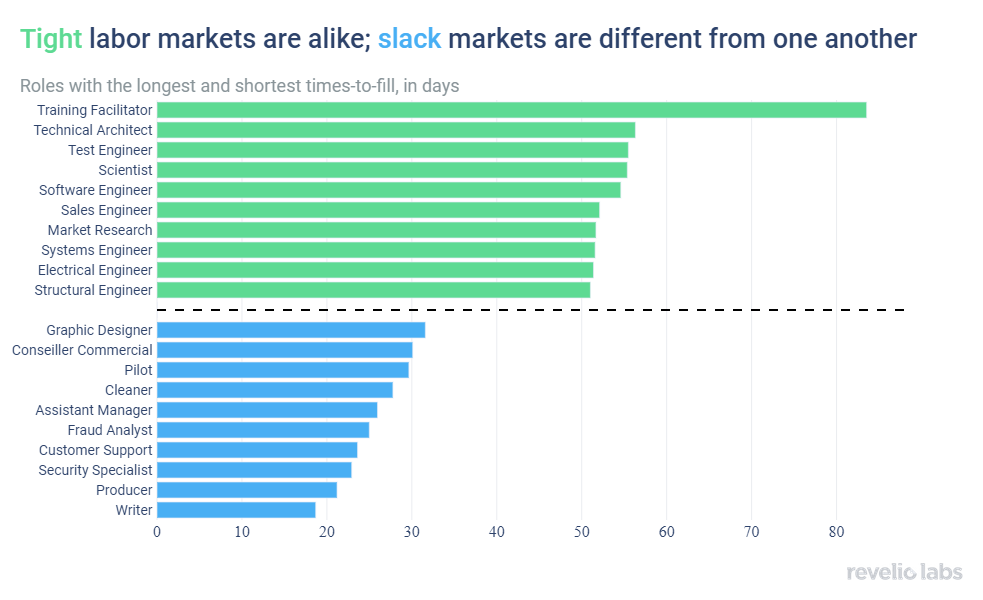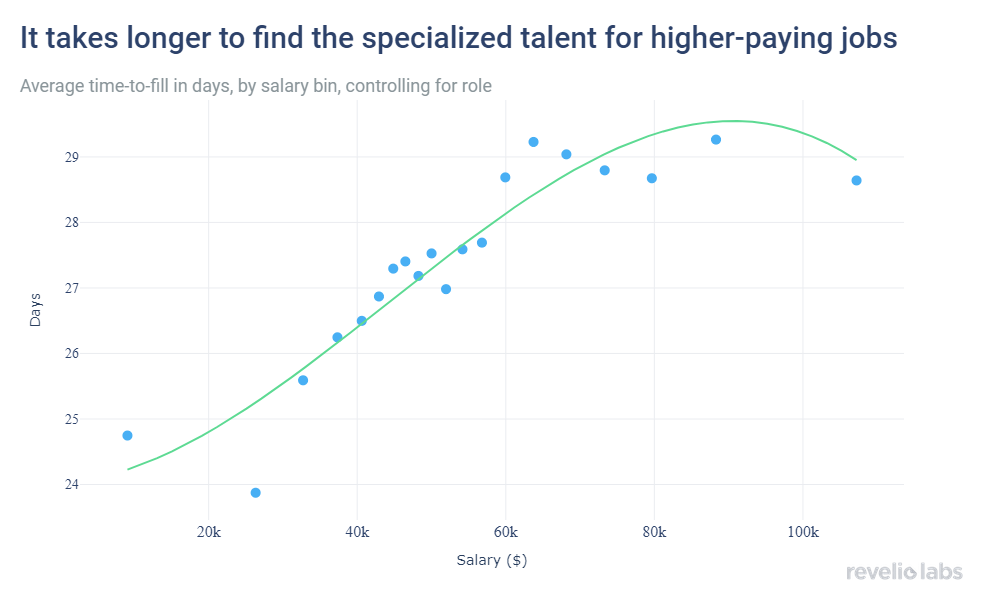Is Boomer Retirement Driving the Tight Labor Market?
Here Are the Labor Markets that Are Particularly Tight

- Labor-market tightness, as measured by average time to fill job postings, has risen steeply in the past two years.
- Positions in engineering and science exhibit the highest times-to-fill, while those with the lowest times-to-fill span various job categories.
- Industries with older workforces see larger increases in tightness. The retirement of the baby boomers will likely drive labor-market tightness higher in the coming years.
When a company posts a job opening, how long does it take for them to fill it? When a worker loses their job, how quickly do they find another? These questions get at the same underlying relationship between available jobs and the workers able to take them—which is often called the “tightness” of the labor market.
The longer it takes for employers to fill positions, the tighter the labor market. Average time-to-fill across the US economy dropped in the pandemic, then surged to a new high, where it persists now.


Naturally, the labor markets for different types of jobs exhibit different levels of tightness. Looking at the average time-to-fill by role using Revelio Labs' job taxonomy and workforce intelligence software, we see that engineering roles often appear at the top of the list. This is partly because these roles require extensive training and are not easy to switch into, but it may also signal a deeper mismatch between employers’ needs and the available talent in these areas. Interestingly, roles with the shortest times-to-fill have less in common: They span white-collar and blue-collar work in our job taxonomy, and may require little or a great deal of educational specialization.


Sign up for our newsletter
Our weekly data driven newsletter provides in-depth analysis of workforce trends and news, delivered straight to your inbox!
Job postings with higher advertised salaries also take longer to fill than those with lower salaries, Revelio Labs workforce intelligence software shows. One might expect the opposite to be the case—that a higher salary generates a larger supply of qualified applicants, resulting in a lower time-to-fill. What we see, however, is that such positions advertise higher salaries because they require more specialized workers and a longer selection process.


Finally, the tightness of the current labor market is often linked to retirement of baby boomers—a disproportionately large cohort leaving the labor market. If this mechanism is important, we should expect to see larger increases in labor-market tightness in industries with older workers. And indeed, our data indicate that industries with older workforces have seen larger increases in time-to-fill. As more of the Baby Boomer generation retires, we expect this mechanism to remain important in keeping the labor market tight.




